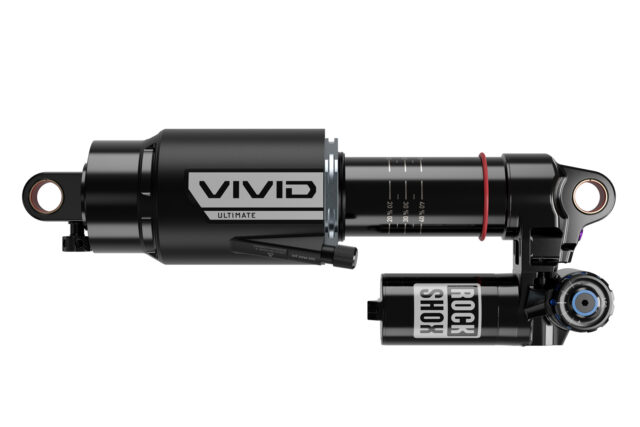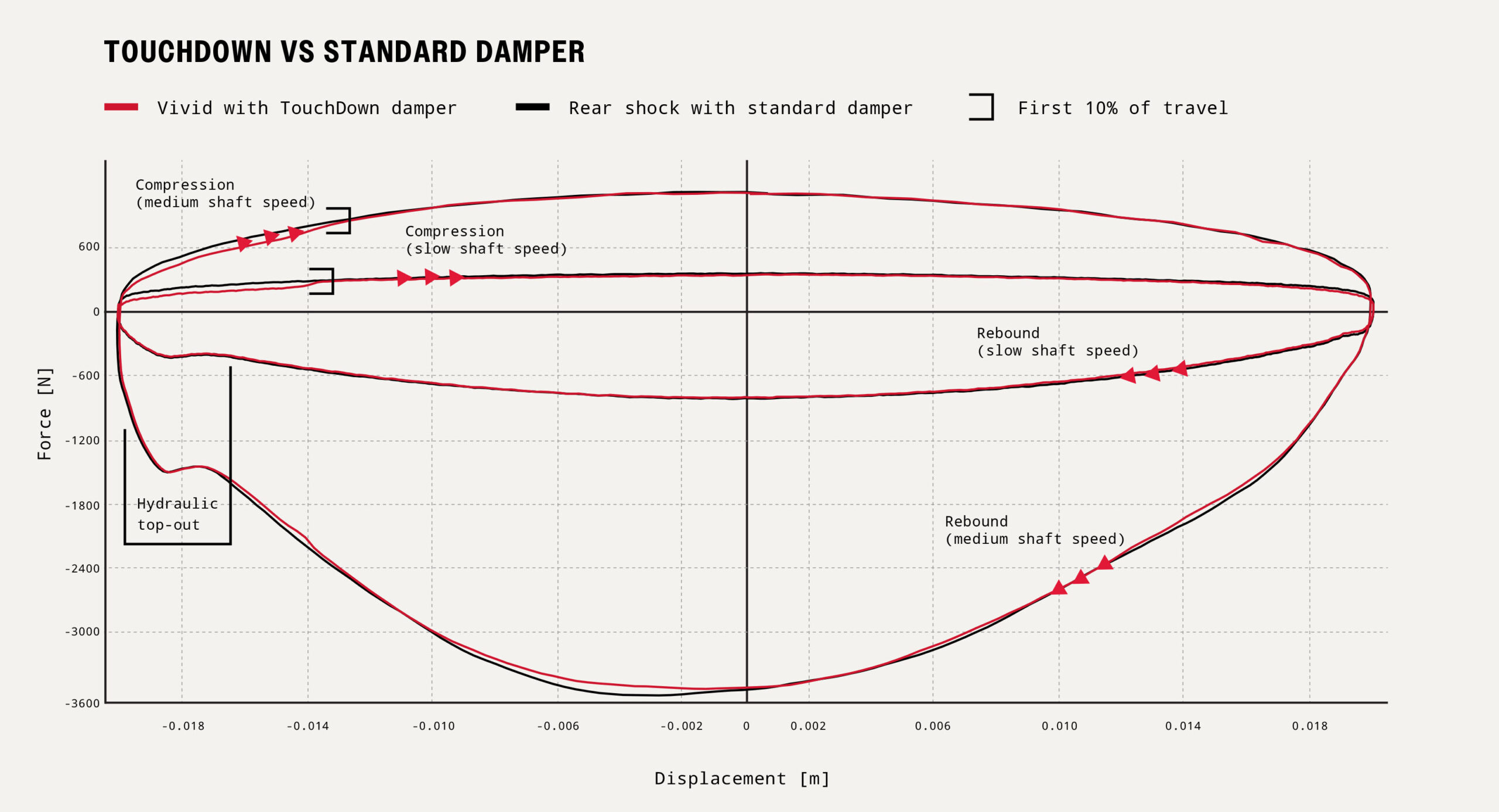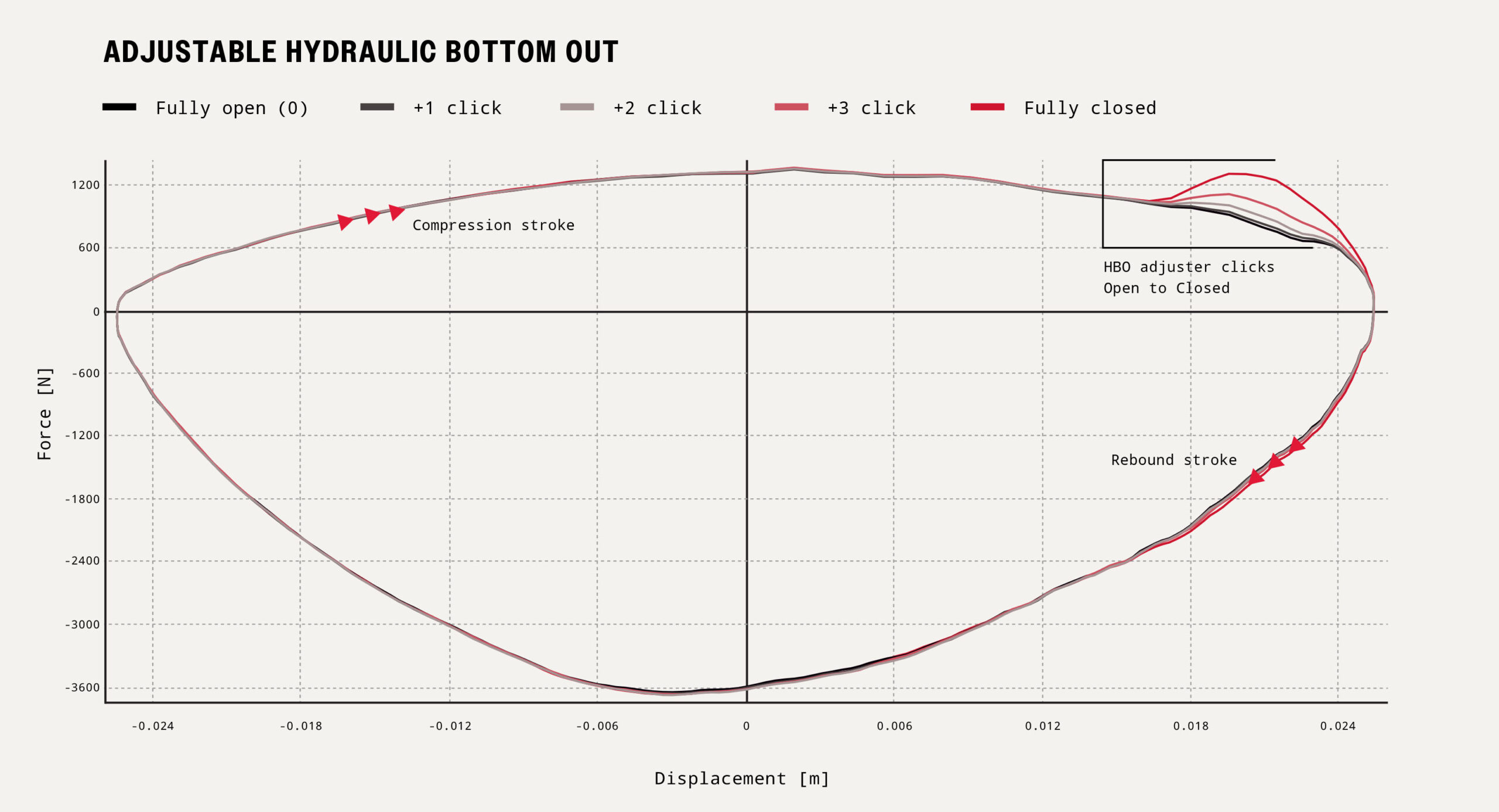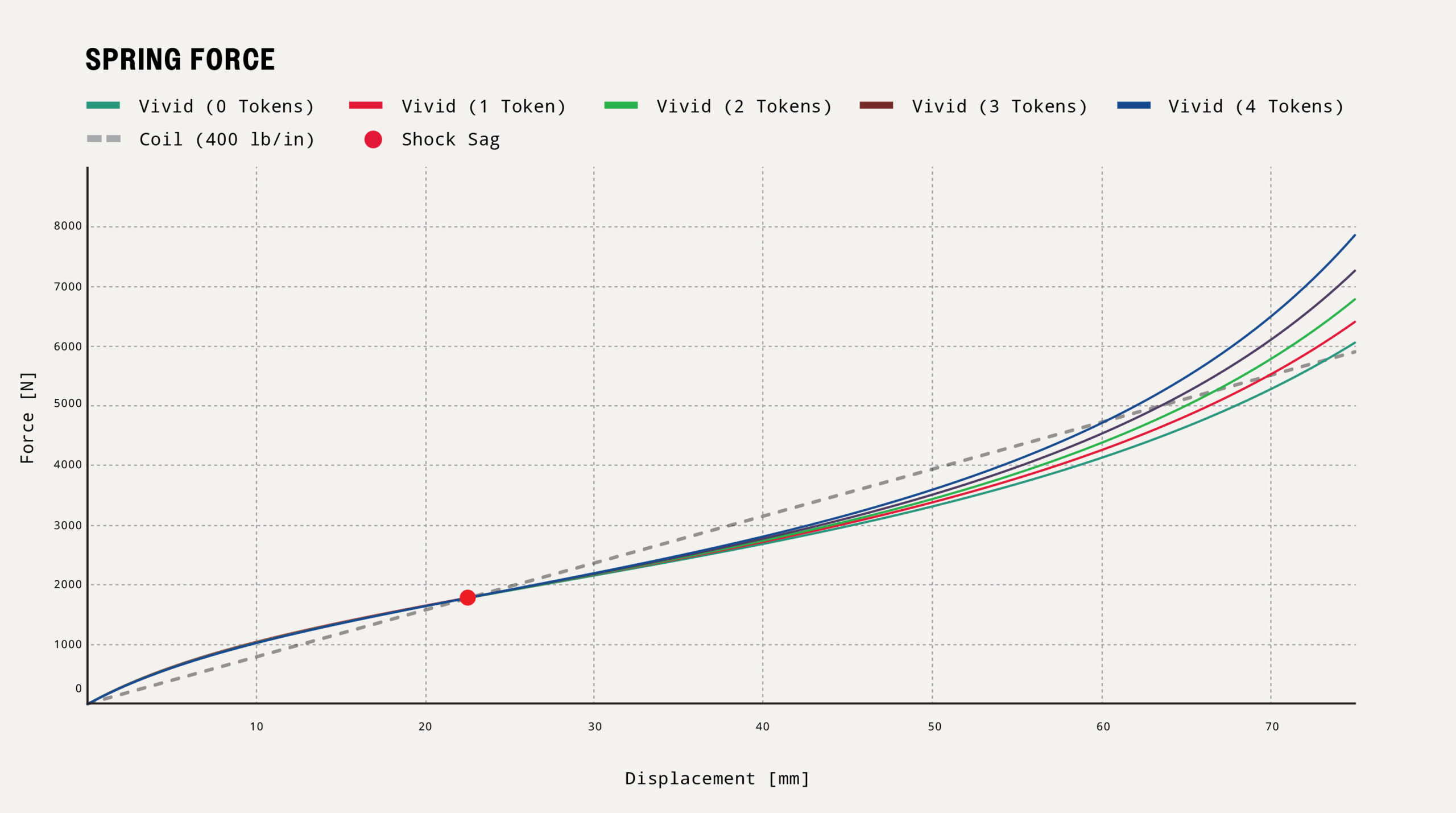2024 RockShox Vivid
MSRP: $699-729, €839-874, £749-799 (Non-US prices include VAT)
Adjustments (Vivid Ultimate; see below for details on different versions):
- Air pressure
- Air volume (via spacers)
- Low- and high-speed compression
- Rebound
- Hydraulic bottom-out

Intro
The RockShox Vivid had been their biggest, most gravity-oriented rear shock for a time, but it disappeared from the market for quite a while. (Technically, RockShox still has the Vivid Coil listed on their site as of when we’re writing this, a few days ahead of the launch, but it’s old enough to only be offered in imperial / non-metric sizes, and the air version is long gone.)
Well, today there’s a new one and, rather interestingly, it’s offered in an air-sprung version only, at least for now. But the new Vivid is far from just a refresh of the old one — it’s an entirely new shock with a very different design, and some very interesting things going on internally.
Design
Visually, the new Vivid looks a good bit like the new 2023+ Super Deluxe Air, but with a bigger air can that has been moved to the opposite end of the shock from the bridge and reservoir. Which, I guess really just means that the bridge and adjusters bear a strong resemblance — RockShox says that part of the program is externally identical, though lightly tweaked internally. The external adjusters closely mirror those of the Super Deluxe, including the knobs for low- and high-speed compression (tool-free on the former, a 3 mm Allen key for the latter); rebound (again tool-free); and an externally-adjustable hydraulic bottom-out feature (3 mm Allen) that’s shared with the Super Deluxe Coil but is absent on the air version of that shock. There’s also an optional climb switch on non-DH-spec Vivid shocks; all of those adjustments are featured on the Ultimate-tier versions of the Vivid but are pared back on the lower-spec options — more on those in a minute.
Things get a lot more different — and interesting — when you look into what’s inside the new Vivid shock. Arguably the most novel feature is what RockShox is calling “TouchDown” — a position-sensitive damper that bypasses the compression damping generated by the main piston in the first 10% of the travel, in order to make the Vivid smoother and quicker to break away and start moving from topout. It’ll be interesting to see how much of a difference that makes on trail — it’s presumably most relevant when you’re, well, touching down from being in the air / off the ground, since that 10% mark is well short of any reasonable sag setting, but we’ll just need to get on one to find out.
The Vivid then also gets an externally-adjustable hydraulic bottom-out circuit, similar to that on the current-generation Super Deluxe Coil, which adds additional compression damping in the final 20% of the travel. Like the Super Deluxe Coil version, the Vivid’s HBO adjuster has five settings, and at least in the case of the Super Deluxe Coil, the tuning range is quite wide. We’ll be curious to see if that’s true of the Vivid as well. Somewhat unusually, RockShox publishes some dyno plots to illustrate the functionality of both the TouchDown and HBO features:



The old Vivid was notoriously tricky to work on, but RockShox says that things have been vastly simplified with the new one, and says that it’s home-serviceable for folks who have some experience working on rear shocks (RockShox sells a tool kit for those that want to do so). The recommended service intervals have also been increased, to 100 hours for an air-can service (which can be done without taking the damper apart, unlike with the Fox Float X2), and 200 hours for a full teardown including the damper. The 100-hour air-can service can be done without the full tool kit (though it’s still recommended); the 200-hour full service requires it.
RockShox has also added a new, optional 8x30mm bearing eyelet for the Vivid, which replaces the DU bushing with a pair of cartridge bearings for a smoother, lower-friction mounting option on compatible frames. The new bearing hardware threads together (using custom low-profile sockets, sold separately) and is compatible with the Vivid and current-model Super Deluxe Coil, but doesn’t clear on the Super Deluxe Air.

Versions
As per usual for RockShox, the Vivid is offered in a bunch of various tiers, with differing levels of adjustability and features. All use the same general damper architecture and the same spring design but with different reservoir assemblies with different levels of adjustability. RockShox doesn’t list the full array of size options for the Vivid in their pre-launch press kit, but they mention strokes down to 45 mm (which would equate to a 190 mm eyelet / 165 mm trunnion mount version), up through 75 mm stroke (250 mm eyelet / 225 mm trunnion sizes).
The top-tier Vivid Ultimate gets the full suite of adjustability — high- and low-speed compression, rebound, hydraulic bottom out, and a climb switch — and is available both as an aftermarket option and on certain complete bikes. There’s also a Vivid DH Ultimate, which forgoes the climb switch but is otherwise identical. The Vivid DH will be replacing the Super Deluxe Air DH in RockShox’s lineup going forward, but the coil version of the Super Deluxe DH carries on, as does the non-DH version of the Super Deluxe Air.
The rest of the versions are OE-only (i.e., not sold aftermarket), and the Vivid Select+ kicks things off by forgoing the high-speed compression adjuster. The Vivid Select drops the low-speed one as well (leaving it with adjustable rebound, HBO, and a climb switch), and the base Vivid just gets adjustable rebound and HBO, without the climb switch.
RockShox also sells the bolt-on shock bridge and adjusters from the Vivid Ultimate for folks who want to upgrade their lower-spec Vivid to a Vivid Ultimate. The kit costs $235 / €245 / £220 and, of course, requires a damper re-bleed to install.

Some Questions / Things We’re Curious About
(1) How does the Vivid compare to RockShox’s own Super Deluxe Air — especially since the Vivid comes in shorter, more Trail bike-oriented sizes, too — and which one is going to work best for which sorts of riders?
(2) And what about the biggest, most gravity-oriented air shocks from other manufacturers, most notably the Fox Float X2 and EXT Aria?
Bottom Line (For Now)
The new RockShox Vivid looks to give them a more direct competitor to the Fox Float X2 that had been missing from their lineup, with the Vivid bringing some interesting new design elements — particularly the “TouchDown” position-sensitive damper — to the table. We’re working on lining one up for a proper long-term review, so stay tuned for more to come soon.

HI David,
I wish that the suspension manufacturers would communicate the ratio of Pos to Neg air so we can start to understand how air shocks differ, their linearity and how hey may perform on different bikes. My understanding is that the ratio of volume, the relative pressures (where this can be adjusted) and the volume distribution (spacers) are what define the performance but for us consumers, I’m interested in the difference between Super deluxe and Vivid, I assume the ‘large volume air can’ on the vivid (and X2) is really implying a more linear curve due to a larger neg volume. Thoughts?
Matt
Hey Matt,
The section of this article should help answer some of your question.
https://www.sram.com/en/rockshox/rockshox-technology/vivid-development
Cheers,
I think it might also be good to compare this against coil shocks, in particular a Super Deluxe Coil or DHX2. If the small bump sensitivity comes close to a coil, any weight savings and spring weight flexibility on these 170mm travel tanks we’re now riding up hill would be interesting to hear about.